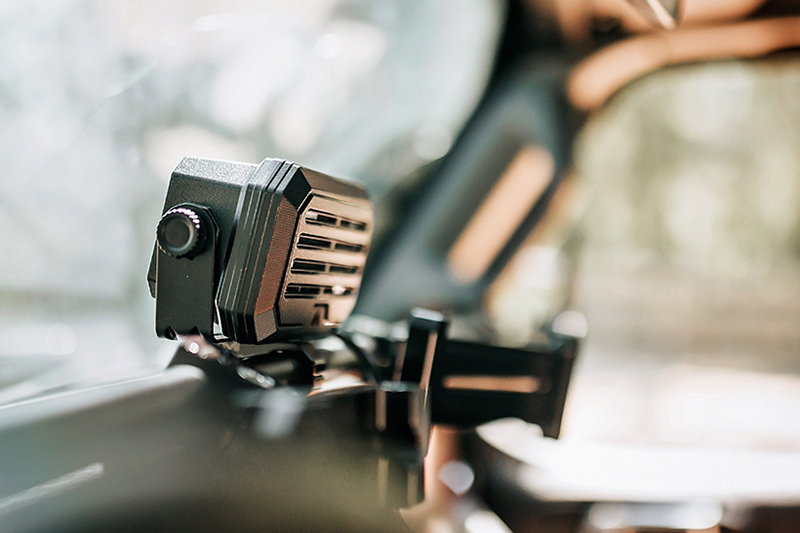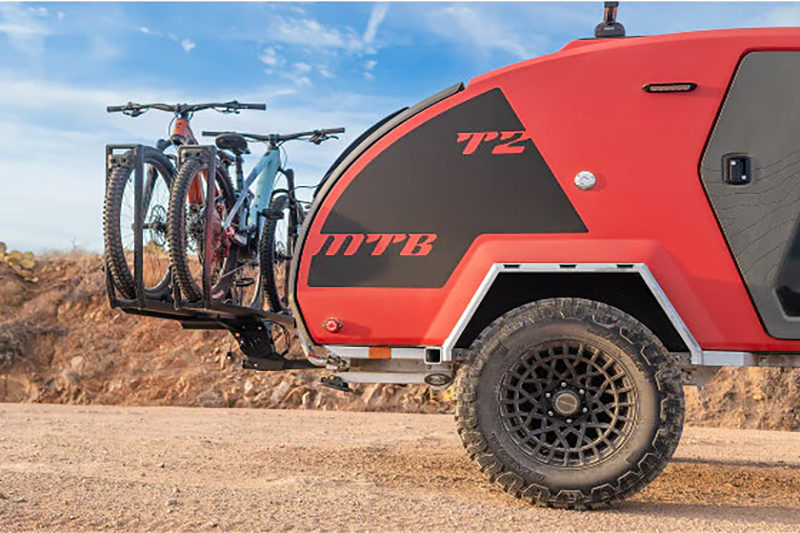Winch Accessories
Some amount of winch accessories is needed to make a functional winch useful and safe to use. If you own a winch, you will want to pack and take with you a personalized winch kit. The winch accessories you actually pack for any singular adventure will depend on these five considerations:
Your personal winching experience (avoid “trying” new accessories in the field during actual recovery efforts)
- The type of vehicle you have
- The different environments and climates you plan to navigate
- The length of time you are gone
- How much kit you can actually jam into your vehicle or off-road trailer
Overlanders and winching
Extended-stay, backcountry overlanders have a particular problem with weight and available space in their vehicles. Food, water, sleeping provisions, cooking kit, spare parts, tools, first aid, and such all weigh down your vehicle. There’s not much leeway for a pile of heavy winch accessories.
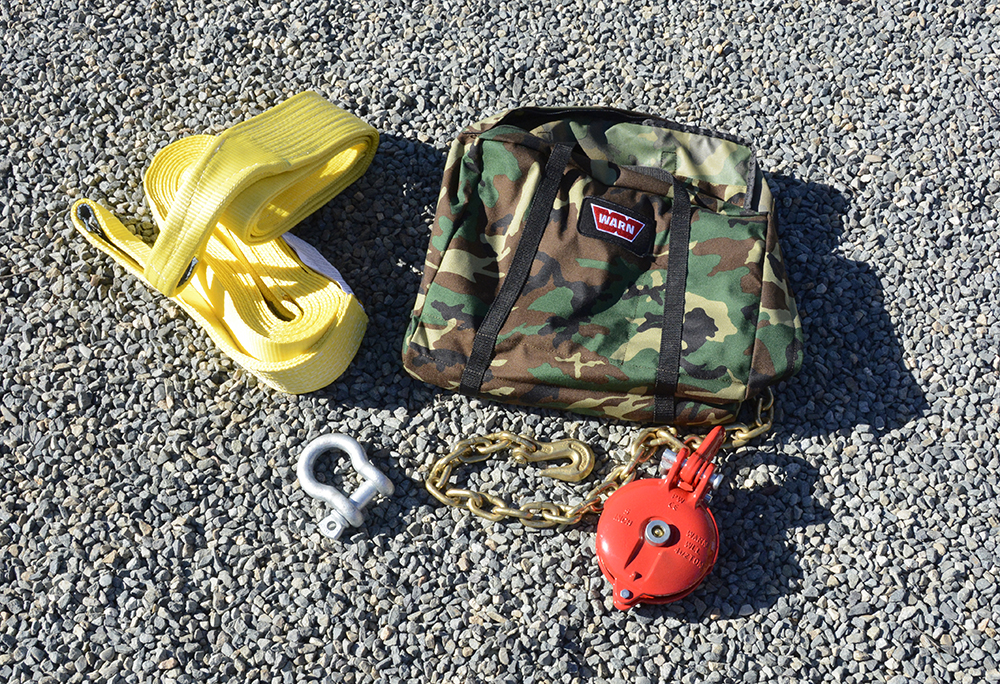
To purchase your winch and recovery accessories, consider one of the fine kits offered by many manufacturers and distributors. This kit by WARN comes with most of the accessories you’ll need for successful winching and a heavy-duty bag.
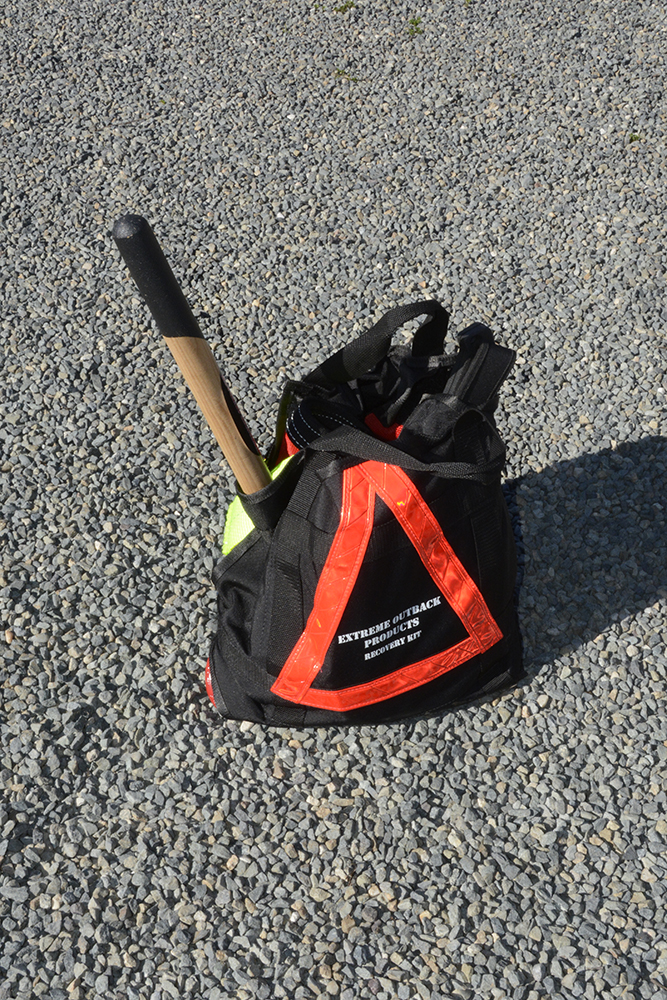
This recovery bag by Extreme Outback Products comes with practically everything you need for recovery situations, including a small shovel.
It’s tempting to categorize winch accessories into required and suggested lists. However, the particular category a specific winch accessory should be placed can be hotly debated. You will be the one that ultimately decides whether a specific winch accessory accompanies you into the backcountry or not. Consider owning all of the listed accessories, but packing only what you need for any singular adventure based on the aforementioned considerations.
Here we will divide winch accessories into three categories:
Safety-Specific and General Accessories
Connection Point Accessories
Winch Efficiency Accessories
Safety-Specific and General Winch Accessories
Regardless of what winch accessories you end up taking on an adventure, safety-specific and general winching accessories should always be part of your winch kit.
Gloves. You must use gloves when you use your winch – regardless of the type of winch line on your winch. Winching gloves should be heavy, leather-type gloves; not lighter driving gloves.

The best winching gloves have leather or Kevlar palms.
Recovery Damper. The recovery damper is an important, must-use accessory that helps prevent a winch line (or other recovery ropes or straps) from recoiling and flailing if a line or winching component failure. Many call this accessory a winch damper, but that term is too specific. A recovery damper should not only be used during winching, but any time winch line, rigging straps, kinetic energy recovery ropes, or kinetic energy recovery straps are used during self-recovery or vehicle-assisted recovery. Recovery dampers should be used with steel cable and synthetic rope winch line. The weight of a recovery damper forces a broken winch line to fall to the ground, instead of flailing, and snapping up and backward towards vehicles or people. The best, commercially made recovery dampers have Velcro to hold the damper in place, weighted bottom edges, and rubber around the winch line to keep them from sliding. If you do not have a commercially made recovery damper, you can hang a blanket on the line. You can also wrap rigging straps around the line to add weight. Consider using a couple of recovery dampers on winch line during recovery efforts.
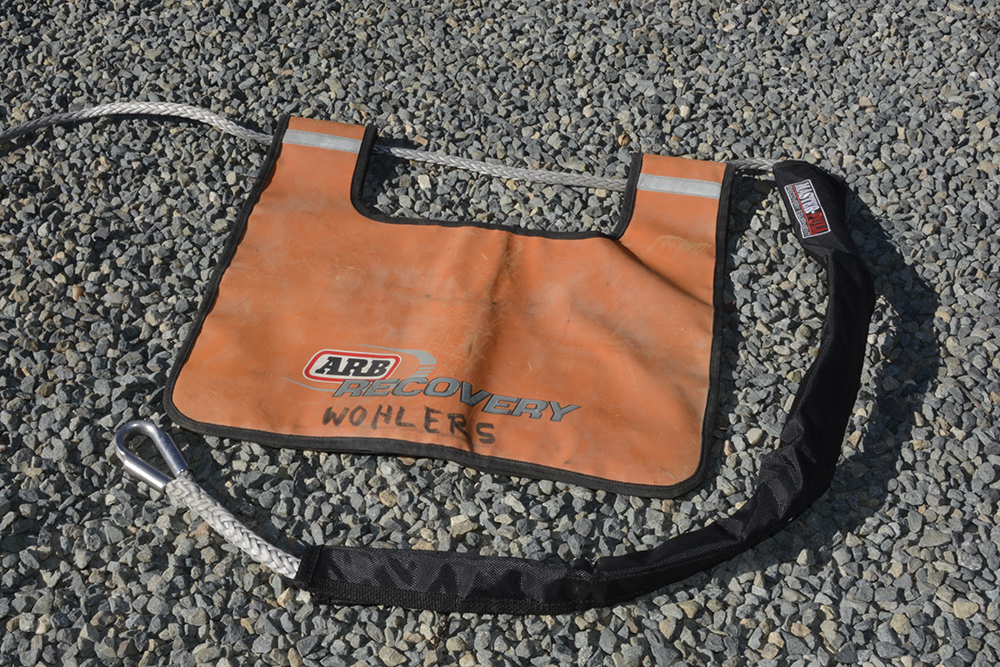
A recovery damper should be used any time a winch line, recovery strap, or recovery rope is used. Shown here is a winch line with a moveable, anti-abrasion line cover.
Hook Strap. If you have a hook on the end of your winch line, a hook strap should be attached. Use this hook strap to keep your fingers at a distance from the fairlead as the rope is being spooled onto the drum.

Winch Safety Strap. Like a recovery damper, a winch safety strap will restrict and control the release of energy in the winch line should something accidentally break in your rigging set up. A winch safety strap can be practically any long rigging strap; however, nylon, stretchable kinetic energy recovery straps are probably best for obvious reasons.
Wheel Chocks. For self-recovery winching, wheel chocks are somewhat optional. You might consider carrying a pair of heavy-duty wheel chocks so you can firmly hold your vehicle in place when moving objects (large trees and boulders) off a trail with your winch. Large rocks or pieces of timber can work as well. If you use your winch to conduct a vehicle-assisted recovery, wheel chocks, along with your parking brake, can help stabilize the vehicle doing the winching.
Winch Line Cover. If you have synthetic rope winch line on your winch, you must have a way to protect your line from abrading over rocks or gravel. Winch line covers are a necessity, but you might also consider taking with you a couple of small wooden boards to lay under your rope while pulling in or letting out line over terrain. While winching, this line protection can move, negating its protective function.
Synthetic Rope Splicing Kit. If you use synthetic rope as winch line, consider making or purchasing a rope splicing kit.

Synthetic rope splicing kit by 7P
Shovels have utility beyond winching operations. For example, prior to winching operations, you may have to excavate and reconstruct the trail to make your winching efforts easier. A shovel can also be used to dig a trench around the backside of a large boulder. In this trench you can lay choke chain used as a winch connection point. The trench will help keep the chain in place, around the rock, while winching.
Winch Controller. Not really an “accessory” per se, however, don’t forget to pack it in your winch bag.
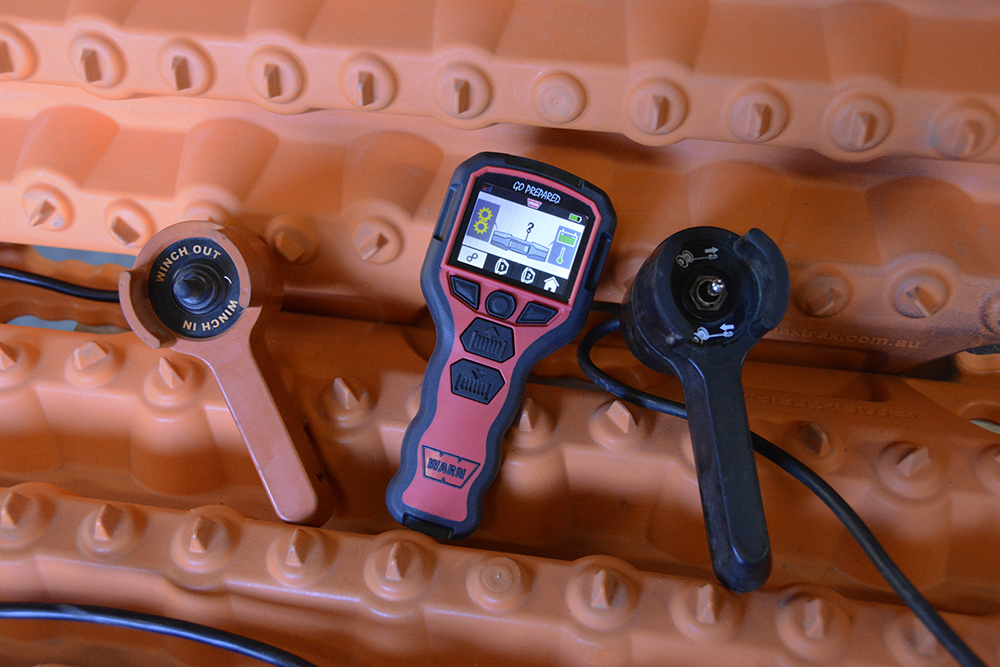
Connection Point Accessories
Synthetic Rope Shackles. Like synthetic rope for winch line, synthetic rope shackles (aka: soft shackles) are the way of the future. Soft shackles are made of varying sizes of the same Dyneema or plasma line used for synthetic rope winch line. Like all synthetic rope, these shackles must not be placed on anchor points with sharp edges – they can be cut and damaged. Regardless, these are the shackles overlanders should use – period. These shackles have a lot of positive features:
These shackles are actually stronger than the best forged steel shackles. Appropriately sized soft-style shackles are extremely strong, with most having a breaking load strength of around 32,000 pounds (14,515-kilograms).
Replacing your steel shackles with these soft-style shackles will significantly reduce the weight of your winching accessory bag or box. Four, 3/4-inch metal shackles can weight up to ten pounds. Four, 7/16-inch soft shackles barely tip the scales at a pound and a half. Synthetic rope does not stretch.
They float on water. No more losing steel shackles in the mud or a stream.
Since they are flexible, they conform to a given anchor point.
Should a soft-style shackle actually break, the potential energy stored in these shackles is much less than steel – therefore they are safer to use.
Soft-style shackles may be used to join two kinetic energy recovery ropes or straps (unlike metal shackles that should never be used to join these ropes or straps).
Screw-Pin Anchor Shackles. (aka: D-Shackles, Bow Shackles, Clevis) These are the only style metal shackles you should use to rig any recovery setup. The following is some important information about shackles:
Like most shackles, anchor shackles are labeled with their working load limit (WLL). When setting up recovery rigging, don’t exceed this WLL.
The best anchor shackles are forged from steel, and hot-dipped galvanized. Some are even painted. Avoid cast shackles made by pouring molten metal into a mold and then allowing it to cool. This process produces micro air pockets within the finished shackle, severely decreasing its breaking load.
If you use a quality, forged-steel brand shackle (Crosby, Van Beest, WARN, ARB, Black Rat, Icon, Ox Bow, and CM), the actual breaking load of that shackle is much higher than the WLL, sometimes by two to five times. For example, a good quality, Grade A ¾ inch shackle with a WLL of 9,500 pounds (4,309 kilograms) should have a “proof load” of 20,000 pounds (9,071 kilograms). Proof Load means the shackle can take this amount of load and not be deformed, plus the pin can be screwed out by hand. The same ¾ inch shackle will have a “breaking load” of about 47,500 pounds (21,546 kilograms). Breaking Load means that the shackle has been tested to this limit without breaking.
If you purchase a cheap shackle, it might even deform or break at or below its WLL rating. Stay away from shackles that have no manufacturer’s name and markings on them, or if they say “China.” Use of these shackles is not worth the risk.
Every off-roader and overlander’s winch accessory bag or box should contain between two to four anchor shackles.
If you are driving a standard size off-road vehicle, you should probably be using a ¾ inch (the diameter of the screw pin in the shackle), 4-¾ Ton shackle. If the manufacturer rates their shackle in metric tons, a 4 ¾ ton shackle has a WLL = 10,472 pounds (4750 kilograms). If in U.S. tons the WLL = 9,500 pounds (4,309 kilograms).
Smaller shackles may not hold the type of loads commonly seen in typical recovery operations off-road. If you are driving something larger, like a Unimog, EarthCruiser, etc., then you will need more robust shackles (and other rigging components), like a 1 ½ inch shackle, with a WLL of about 34,000 pounds (15,422 kilograms).
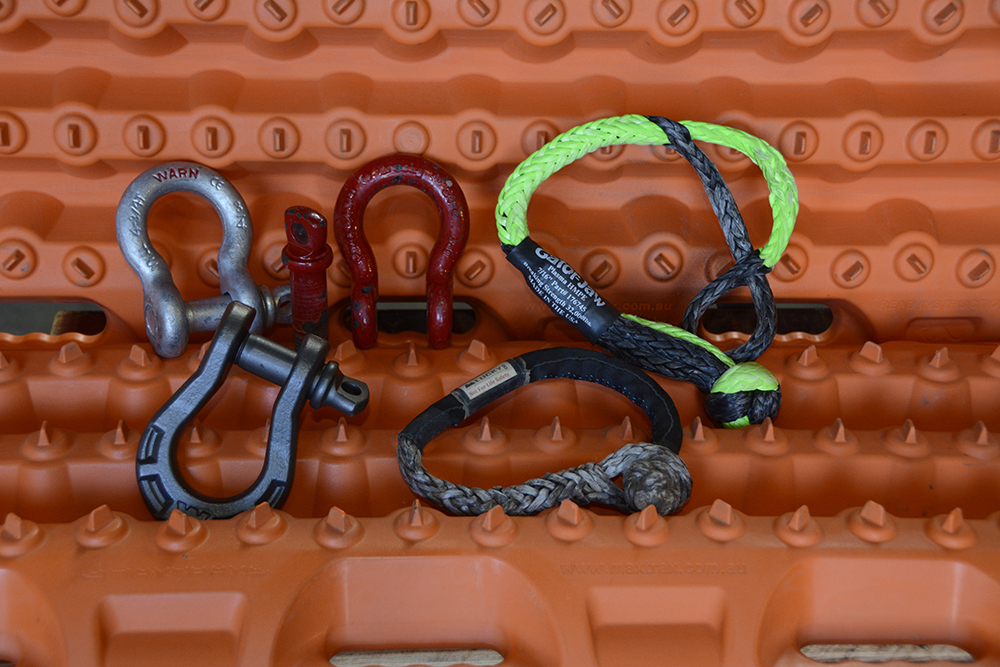
Forged steel anchor shackles and synthetic rope shackles. Most overlanders will carry at least three or four shackles in their personalized winching kit.
Tree-Saver Strap. Also known as a tree trunk protector or rigging strap, tree-saver straps protect trees and increase the safety of your winch rigging. A winch is only as good as a connection point. Without a solid connection point, self-recovery is impossible and unsafe. In many cases, trees are used as connection points. To preserve the tree, tree-saver straps are use when winching. Tread Lightly! ethics dictate that those using a tree as a winching connection point must never wrap winch line around its trunk. Thin winch line (especially steel cable) will dig into the trunk during the pull and will certainly damage, if not kill the tree. Further, if you wrap a winch line around a tree trunk and attach the hook back onto the winch line itself, your rigging is less firm and less assured. Winch line and hook failure probability is increased as opposed to using a stable and solid tree-saver strap and rated shackle for rigging. Tree-saver straps come in varying lengths, are made of low-stretch polyester, and specifically made to handle the high capacity of winch pulling. Tree-saver straps that come in winching accessory “kits” are about 3 to 4-feet/1 to 1.2-meters in length. In some winching situations, you’ll need about a 10 to 15 foot/3 to 5 meters long tree strap, especially if you travel in forests with larger diameter trunk trees. Where trees are sparse, but there are lots of shrubs around, you need an extra-long tree-saver strap to fit around a lot of bushes to get the hold you need. Avoid using nylon kinetic energy recovery ropes (KERRs) or kinetic energy recovery straps (KERSs) as a tree-saver straps. Recovery rope and straps stretch, decreasing the efficiency of your winch. Further, nylon is not as wear-resistant as polyester.

Tree saver strap from Extreme Outback Products.
Choker Chain. Rather than using a tree-saver or polyester rigging strap around sharp anchor points (such as jagged rocks or metal), or when dragging objects (such as logs) over abrasive surfaces, off-roaders and overlanders use choker chain as a rigging connection point. This chain-style is called “choker” because of the way the grab hooks on each end locks onto one of the chain’s links. A grab hook’s pointy end is not pushed through a link opening, rather the entire hook “grabs” or “chokes” one entire chain link, forming a solid connection when both hooks are “choking” the chain (see photo). To wrap chain around a sizeable, solid rock as a winching point, or a log you wish to drag off the trail, you need at least 10-feet/3-meters length of 5/16th inch/8 mm, Grade 70 chain (also called Grade 70 Transport chain). This size and grade chain has a WLL of about 4700 pounds (2132 kilograms). Chain comes in a variety of “grades” indicating the quality and WLL strength of the chain itself. For most off-roading recovery situations, 20-feet/6-meters of 3/8 inch, Grade 70 chain would be better. 3/8 inch, Grade 70 chain has a WLL of 6600 pounds (2994 kilograms). Yes, this length and size chain is heavy, but a smaller length of chain may not wrap completely around a rock or log.
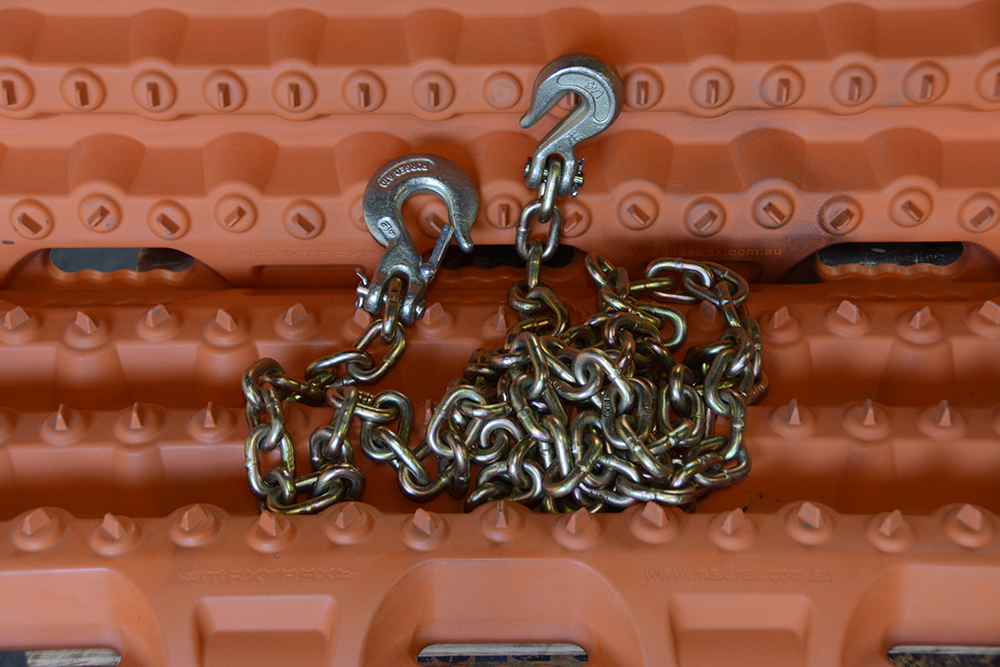
Choke chain with a slip hook on one end and a grab hook on the other.
Pull Pal Land Anchor. The Pull Pal, by Pull Pal Incorporated, is the preeminent off-road winching land anchor. The Pull Pal sets easily and quickly in sand, mud, or snow. The Pull Pal is an essential self-recovery tool when venturing solo in the remote backcountry. Most experienced off-roaders and overlanders will argue rightly that this winching tool is a “required” winch accessory. You will place it on your required list after the first time you need to self-recover with your winch, but have nowhere to connect your winch line; no trees, no rocks, no vehicles, no anywhere. Then and only then will you see the rational for purchasing, and always carrying a Pull-Pal with you each and every time you venture into places like the desert, sand dunes, on mountains above the tree line, and salt flats. As of this writing, there are other makes of off-road land anchors. However, none are as robust or capable as the Pull-Pal land anchor. The Pull-Pal is heavy, but disassembles and folds into a manageable footprint. Rather than throwing the Pull-Pal into your vehicle, there are some manufacturers that make bumpers, racks, and spare tire carriers that accommodate mounting the land anchor. If you do place it in your vehicle, purchase the Pull-Pal’s cushioned carrying case with your anchor. Pull-Pal, Inc. makes three sizes of winching land anchors. The Pull-Pal model RW11000 is the size needed for most off-road vehicles, through midsized trucks. If you have a larger vehicle, such as a Unimog, EarthCruiser, or a full size Sportsmobile, you may wish to get their larger model.
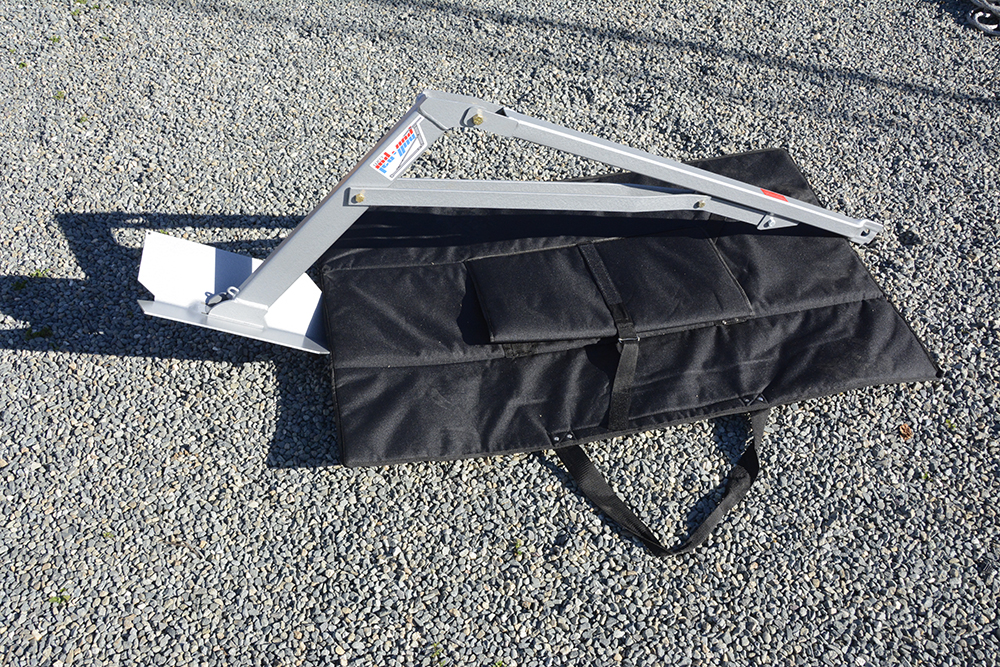
The preeminent winching land anchor, the Pull Pal with its portable bag.
Receiver Shackle Bracket. The very best way to use a receiver hitch as a frame-mounted connection point for winching (and use of a kinetic energy recovery rope or strap) is to purchase a receiver shackle bracket with a shackle attached. If you have a rear receiver hitch already on your 4WD vehicle, simply attach this bracket on your vehicle with a locking hitch pin and leave it there; ready for your next adventure.


Winch Efficiency Accessories
Pulley Block. These devices are also known as a snatch block, because they “snatch” the winch line between two plates or caps, trapping the line against the pulley. There are two basic types of pulley blocks used for off-roading:
1. Split-Leg or Swing-Away Pulley Blocks, and 2) Clam Shell Pulley Blocks. Pulley blocks are helpful two ways when winching:
They can safely change the direction of a winch line – allowing to your move around corners. When rigged a certain way, pulley blocks can double the pulling strength of a winch without overloading the winch or line.
A pulley block is always attached to a winch rig setup with an appropriately sized shackle. Certain recoveries demand the use of multiple pulley blocks in a rigging setup. In an upcoming article in OutdoorX4, we’ll cover the difference between a fixed and moving pulley block.

Three examples of Split-Leg pulley blocks by WARN and ARB.
Synthetic Rope/Strap Winch Line Extensions. Regardless of whether you have steel cable or synthetic rope on your winch, you should carry with you a winch line extension for those really long distances to a connection point, or the need to add one or more pulley blocks to your rigging set up. A winch line extension increases your rigging range. Winch line extensions can come in handy when righting a tipped over or rolled vehicle. There are two types of winch line extensions you can purchase – synthetic rope or a winching strap. Both don’t stretch, and are specifically designed for winching. ARB makes an extraordinary, dual-utility polyester winching strap to use as an extension. The ARB winching strap is purple-colored so as not to confuse it with the orange, stretchable kinetic energy recovery strap they also sell. It also has large, looped ends that accept shackles for rigging. Most synthetic winch line sales companies also offer winch line extensions with thimbles on each end for easy connection to shackles. Bubba Rope makes excellent winch line extensions in two lengths – 25 feet (7.5 meters) and 50 feet (15 meters). The Bubba Rope extensions are fabricated from 12 strand Plasma® rope, and have exceptionally made, rubberized, non-metal eyes.
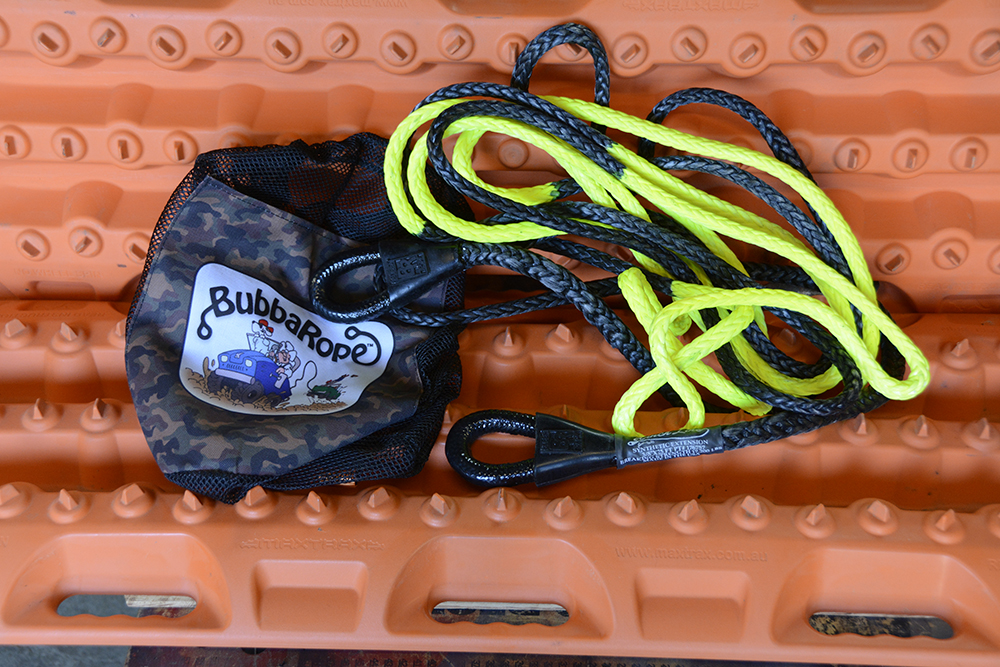
Synthetic rope winch line extension by Bubba Rope.
Inclinometer. To measure the degree angle of a slope you wish to winch up, you need to an inclinometer. Your inclinometer may be of the manual, non-digital type installed in a vehicle, or an inclinometer app on your smart phone. Either way, lay your inclinometer on your winch line prior to pulling so you can complete your Recovery and Load Assessment Checklist. (More on how to conduct a Recover and Load Assessment in Issue 14 of OutdoorX4.)
Editor’s Note: Read more on this subject in the latest issue of OutdoorX4 by clicking HERE.
* OutdoorX4 Magazine – Promoting responsible 4×4 adventure travel and outdoor recreation



